Exactly this time last year my neighbour and go-to flora and fauna guru Beatrice Groves took me to the Lye Valley in search of the elusive flower, the Grass of Parnassus. The story of this floral walk became the first of my Oxford Sausage posts. And so, in celebration as I embark on my second year of weekly excursions, she has kindly agreed to introduce me to another Oxford nature reserve, Oxey Mead, 66 acres of land that together with the larger Pixey and Yarnton Meads form part of a swathe of ancient flood plains that date back to before the Domesday Book and which border the river Thames to the north of the city. But she is anxious. For these are hay meadows. Never ploughed, the land is kept solely for its crop of winter animal feed. And at any moment the place will be mown. And when this happens, we will have missed the magnificent pageant of wildflowers and butterflies which this secret hideaway promises. For the wildflower hay meadow is one of the great natural wonders of the world.
Oxey Mead can be accessed by walking along the towpath from Duke’s Cut, the stretch of water that links the Oxford Canal with the Thames. Or, as we do, from the busy A40 a mile from Wolvercote roundabout. I’ve always wondered about the line of cars parked up here on the roadside verge. But these are the markers for the place, and on arrival, as the lorries thunder by, I notice that some are covered in a layer of dust as if rarely used. These belong to the boat people, the local community in these parts, their wheelbarrows lined up along the hedge, the only way to transport provisions from the road to their homes on the water.
There’s a metal gate across a gap in the bushes, through which you must enter. And once over the boundary our worries dissipate. There as far as the eye can see are fields waist high with brightly coloured flowers and swaying grasses, gracefully meandering down to a river that snakes along the skyline. The sweet-smelling cream froth of meadowsweet and the tall purple spikes of Loosestrife (what Shakespeare refers to as ‘Long Purples’, as Ophelia gathers them before she drowns in ‘Hamlet’) I remember from our previous walk together. But many are unfamiliar. And this is when having a walking wildlife app as your guide in the shape of Beatrice is very handy.
“One of the things that make this place so special is these little red flowers” she says as we make our way past the clumps of tall dense maroon flowerheads by far the most dominant. “This is Great Burnet, or ‘Sanguisorba Officinalis’ which is blood in Latin. A member of the rose family, a sure sign of ancient water meadows.
“Here’s chicory,” she adds pointing to a tall green stalk dotted with tattered but exquisite pale blue flowers. “It is what Camp coffee is made from.
“And this is Devil’s-bit scabious. You usually only see field scabious so it’s nice to find it here. It gets its name from its short, truncated roots as if the devil has taken a bite off the ends.” A flower apparently that has been around forever, ‘Scabere’ is the Latin for to scratch from the days when it was used for the treatment of skin conditions such as scabies and sores from the bubonic plague.
Then there is Lady’s Bedstraw, a dainty, yellow low-lying plant infused with the smell of honey, that was once dried and used to stuff the mattresses of women about to give birth; pretty, purple Knapweed; delicate Quaking grass (it shakes and shivers in the breeze) and the wonderfully titled Sneezewort and Marsh Woundwort, the clue for their use in the name.
I must admit it does feel as if we are walking in a place from a bygone age. Oxey Mead (once Oxhay Mead old English for meadow) was formerly common ground for the use of the inhabitants of Kidlington, Yarnton and Begbroke to make hay for the winter months. From the 13th century the rights to an acre, (the amount of land that could be cut by one man with a scythe in one day, from St Peter’s Day 29 June onwards, and divided into strips so the mower didn’t have to break their rhythm to turn around) was vested in the ownership of a small, named cherry-wood ball. Each year these would be drawn from a hat, so the farmer would get the chance of getting some good and some poor hay. The last of these lot drawing ceremonies took place in 1968.
In the past these flood plain meadows rich in diverse species thanks to the natural disturbance that seasonal flooding provides, followed by the traditional practice of haymaking, would have been common. But between 1930 and 1984 an estimated 97% of them went under the plough or were drained. Six acres of Pixey Mead were lost to the Oxford bypass in 1958. Oxey Mead was cut in half by the A40. Now both thankfully owned by Berkshire Buckinghamshire and Oxfordshire Wildlife Trust they are designated Special Site of Scientific Interest and as a result are properly managed. “One of the interesting things is it has to be mown,” says Beatrice as we reach the river. “Because otherwise the goodness from the grass and the plants rots into the ground and that invigorates the grass. You need a certain amount of poverty of soil to make this unique habitat.”
Away from the road and now the buzz of insects has taken over from the noise of the traffic. Besides the sun has come out and the clumps of thistles are suddenly alive with butterflies. “A lot of people don’t realise that butterflies need the energy of the sun on their wings to fly so that’s why you don’t see them when its cloudy” says Beatrice introducing me to a game of I Spy. 15 minutes to spot as many insects as possible on one bush – well, I can help spot while Beatrice identifies them. The most common are the dusky meadow browns with their distinctive black eyes centred with a tiny white dot on the forewings. There are marbled whites their wings adorned with art deco style decoration, a deep red winged peacock with four azure wing-tip eye spots and a red admiral recognisable by its spectacular orange to red stripes. A hawker dragonfly stops to hover on a tall grass, “they are 300 million years old – it was a good design and they’ve stuck with it” says Beatrice. And last but the one Bea is most excited by, a painted lady, so named after the colourful brushstrokes splashed over its wingspan. Flying at speeds of more than 30mph it has travelled over 9,000 miles from Africa to sit sunning itself on the spiky purple thistle head as our cameras click.
“Look how unbothered it is by us,” smiles Bea as we watch it open its wings wide to drink in the warmth. And with that we head back to the road and what seems like another world. But there is a spring in our step. “I am so pleased we saw that painted lady,” she laughs. And so am I.
You may like to read about my other walk with Beatrice Groves to the Lye Valley https://theoxfordsausage.com/in-search-of-the-grass-of-parnassus/
You can find Bea on Twitter: http://@beatricegroves1
And her posts on Harry Potter and plants here: https://www.hogwartsprofessor.com/beatrice-groves-pillar-post/
All close up photography courtesy of Beatrice Groves
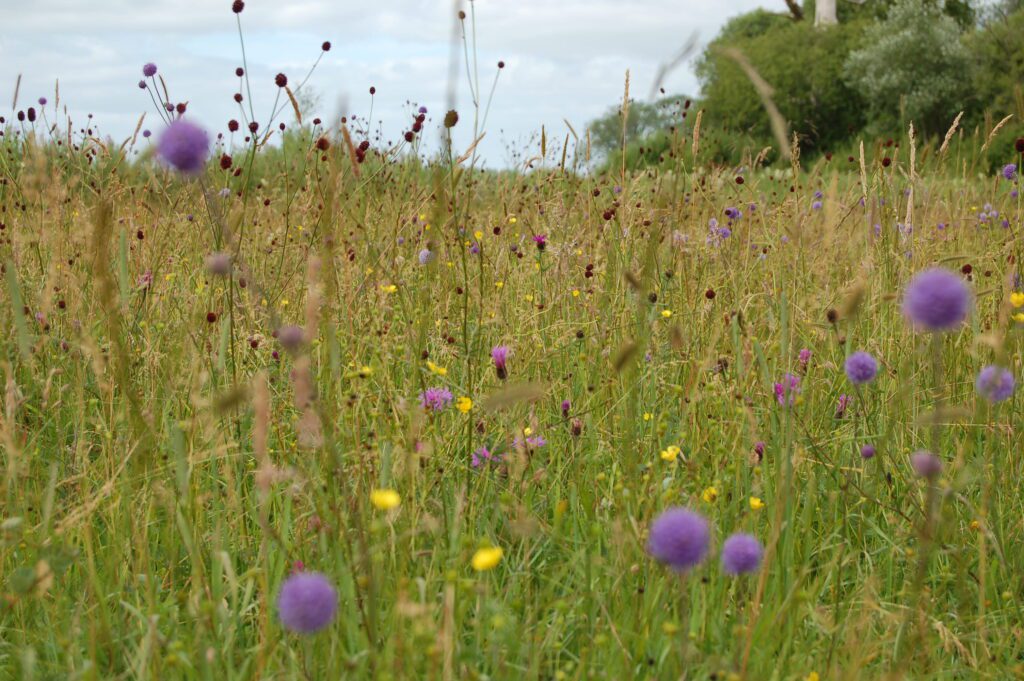
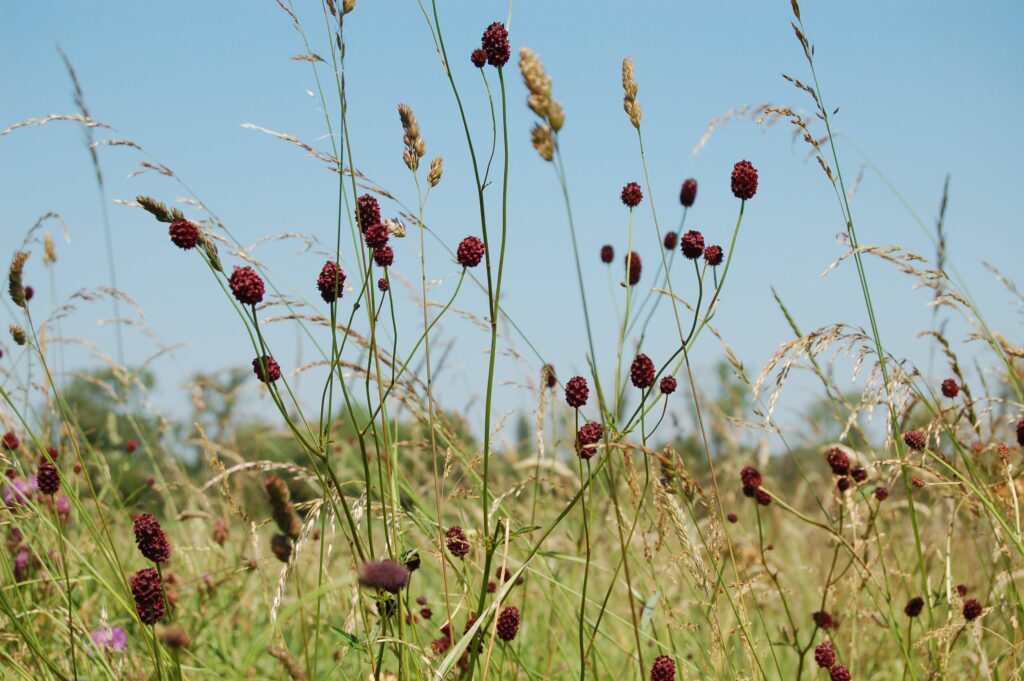
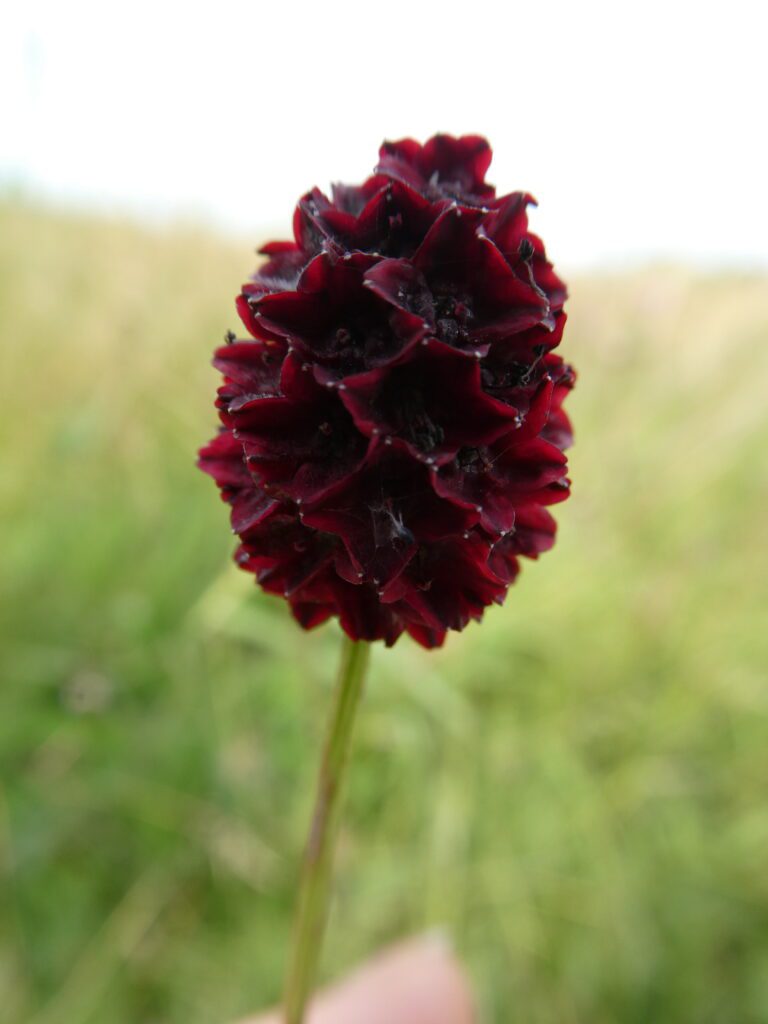
Great burnet – its Latin name ‘Sanguisorba’ meaning blood absorber meant it was in the past used medicinally to staunch the flow of blood.
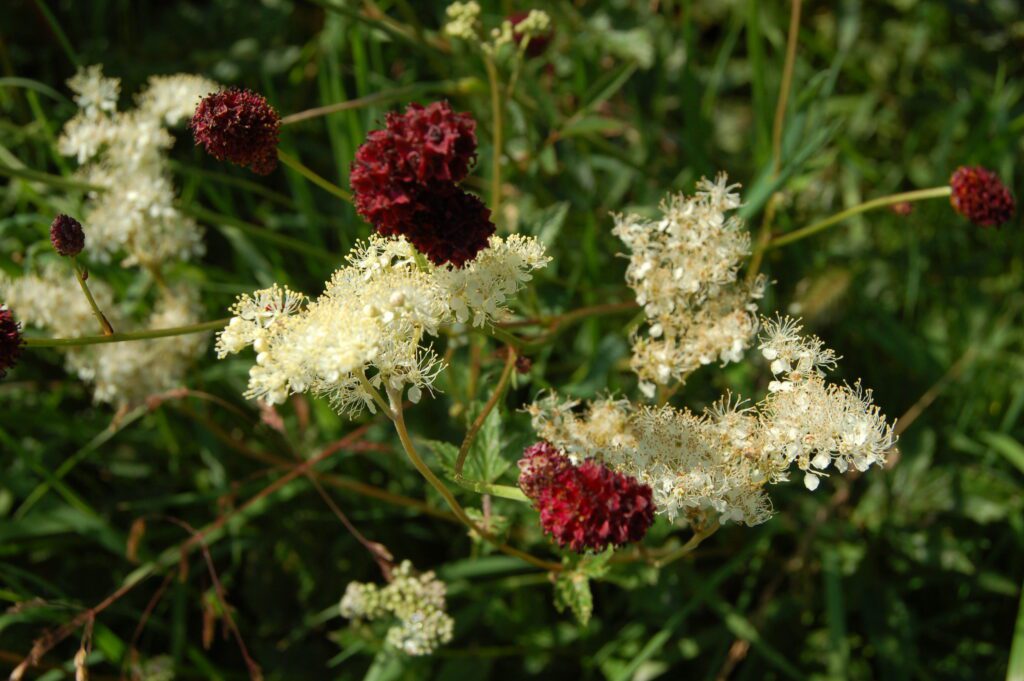
Mixed with the sweet smelling meadowsweet. ‘Adlestrop’, by Edward Thomas is an elegy about late June, when time seems to stand still.
‘No one left and no one came,
On the bare platform. What I saw
Was Adlestrop – only the name
And willows, willow-herb, and grass,
And meadowsweet, and haycocks dry’
Written in June 1914 it is all the more poignant for what happened later that year.
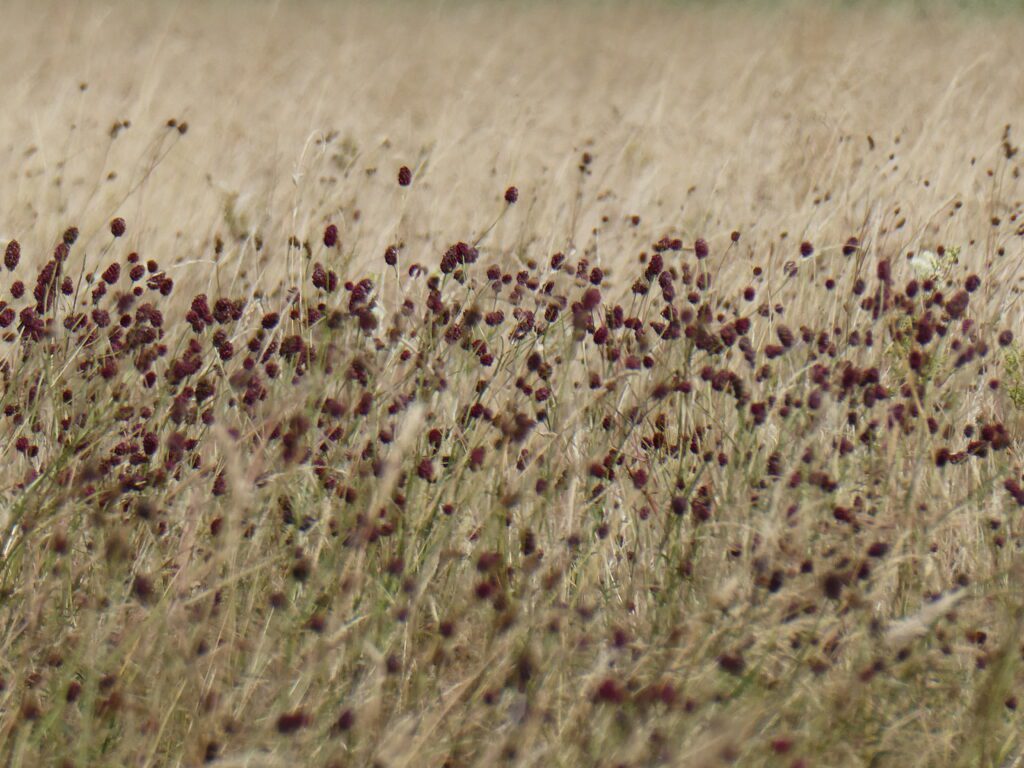
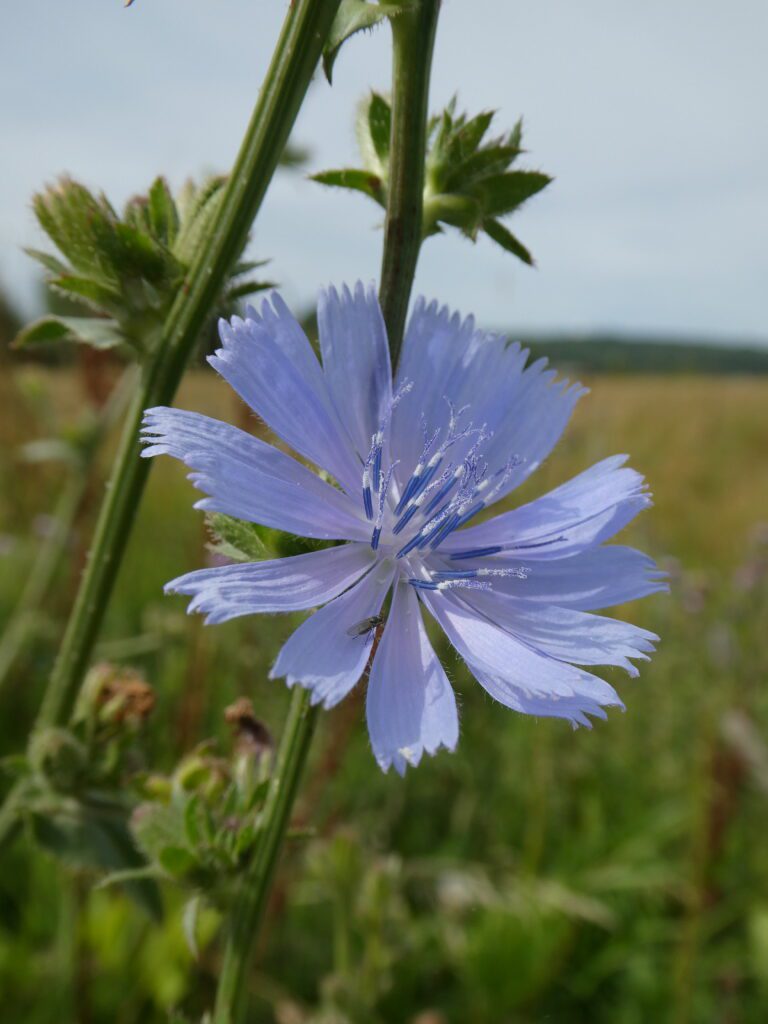
Chicory
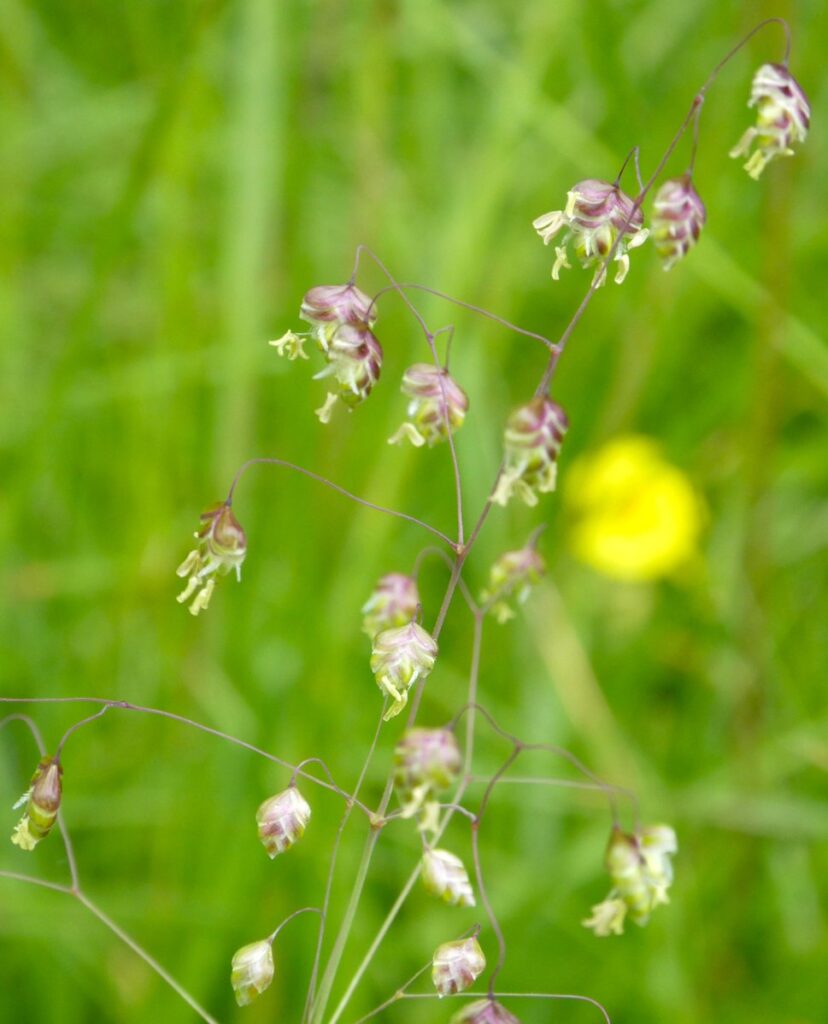
Quaking grass
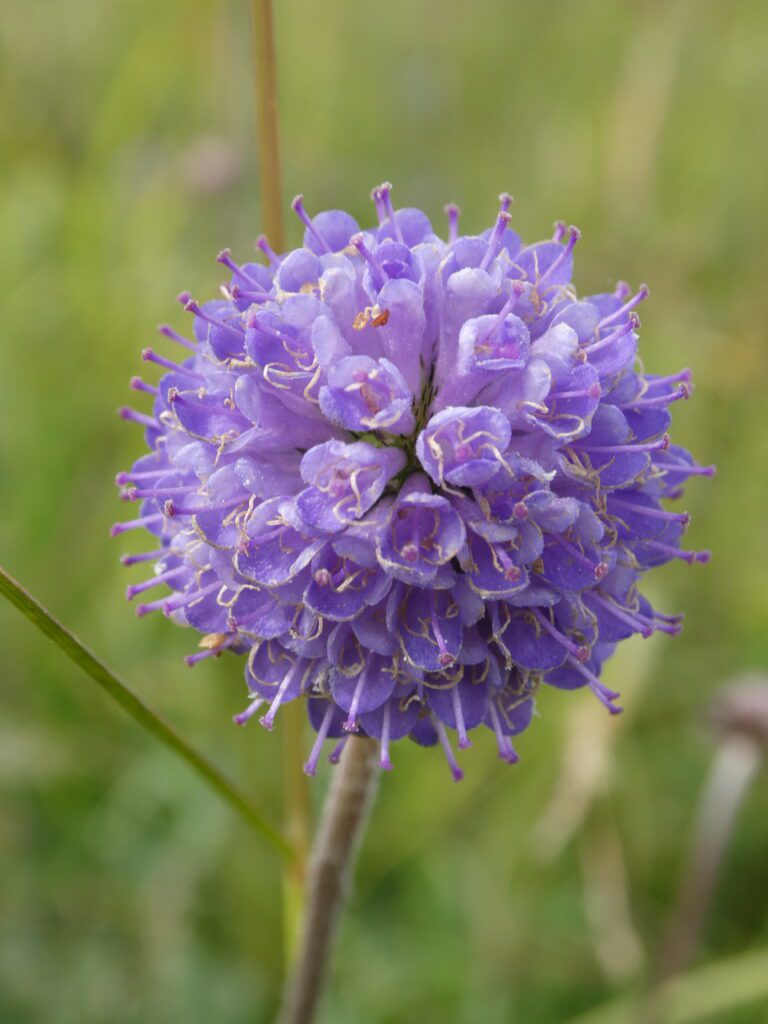
Devil’s bit scabious
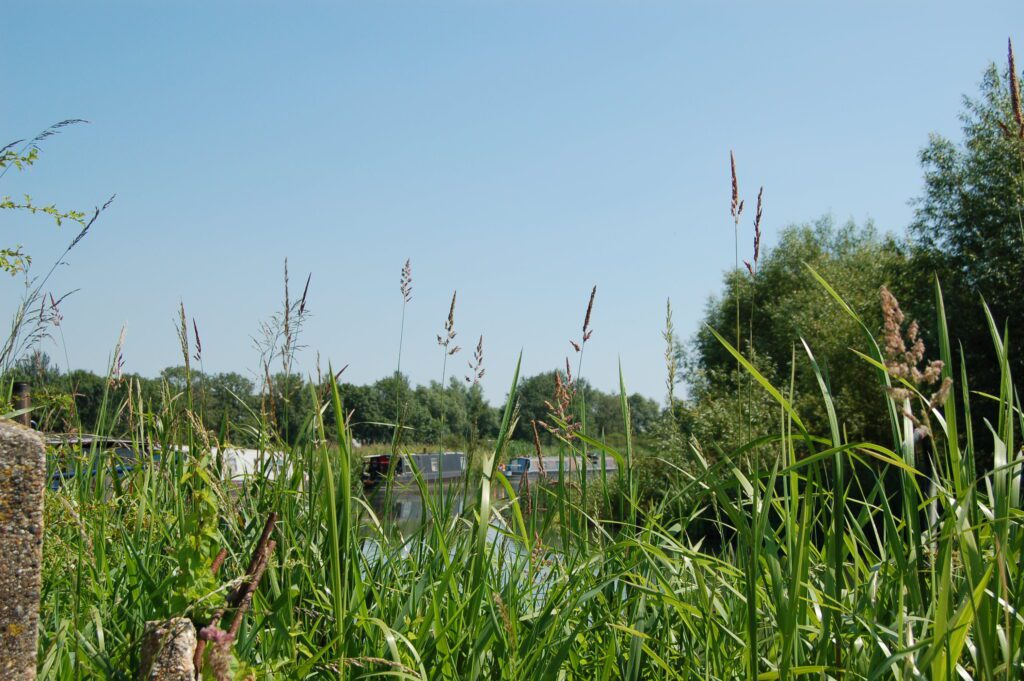
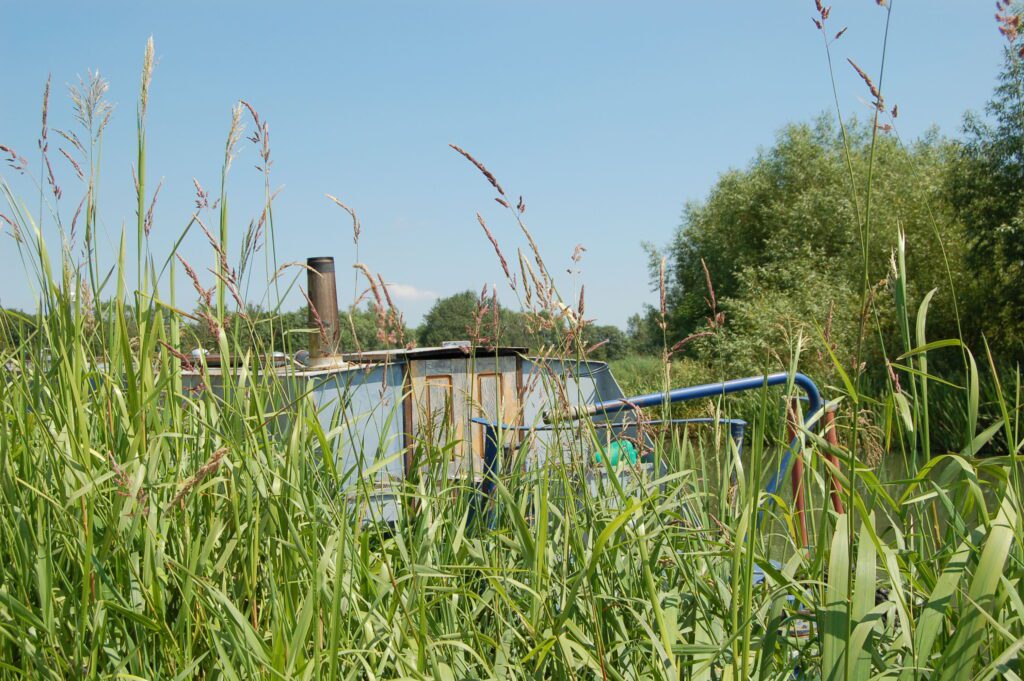
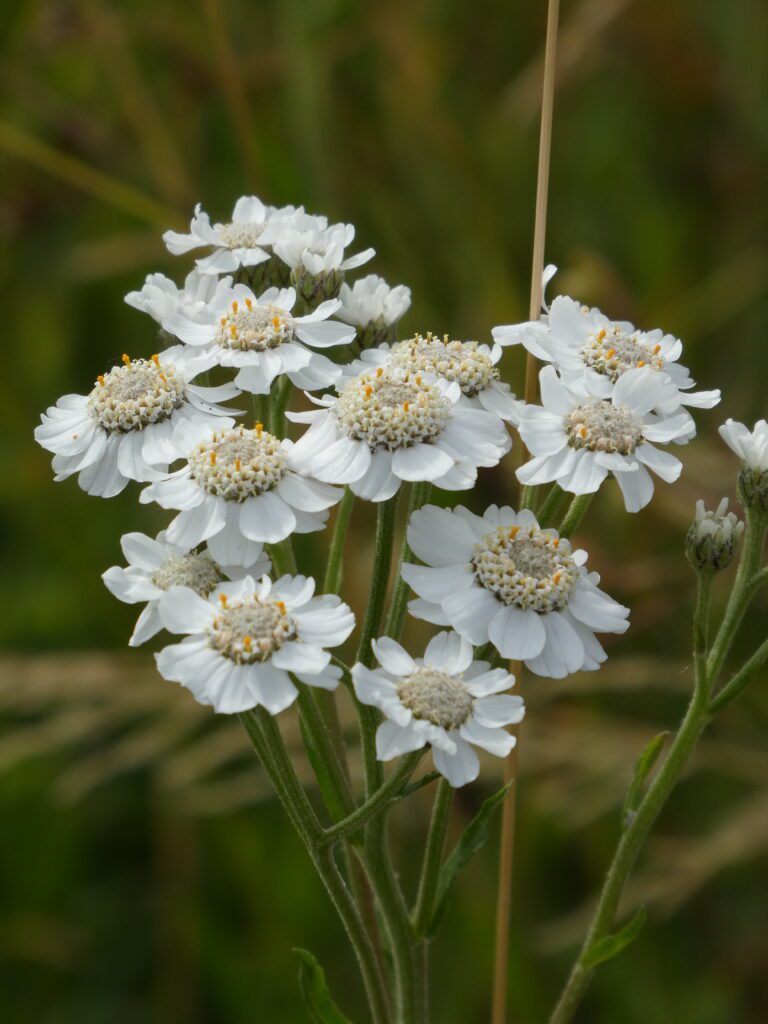
Sneezewort
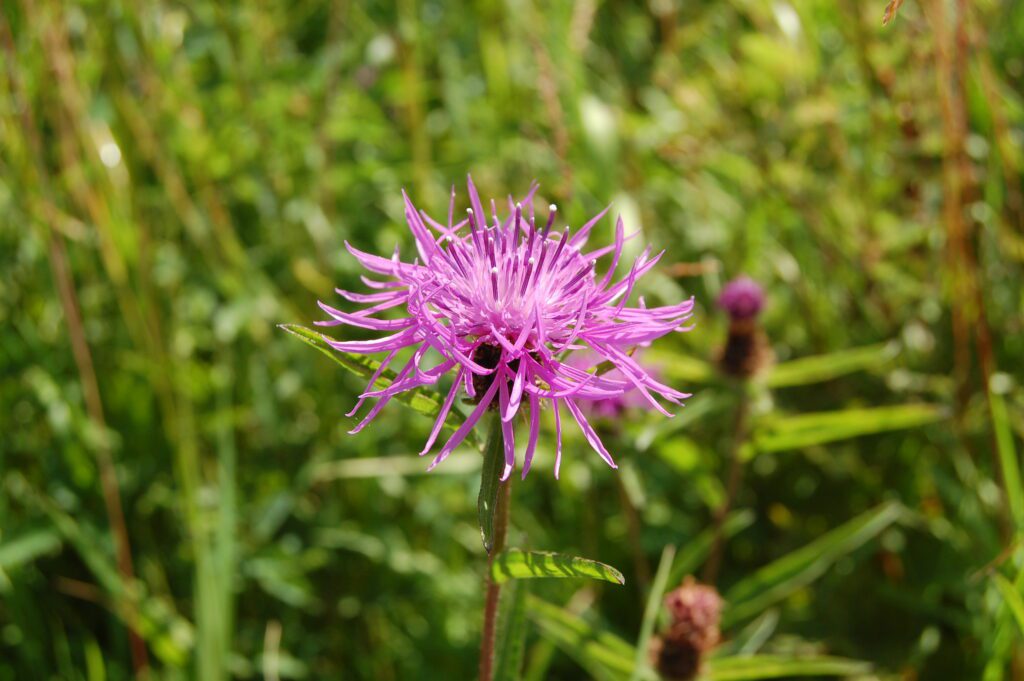
Knapweed
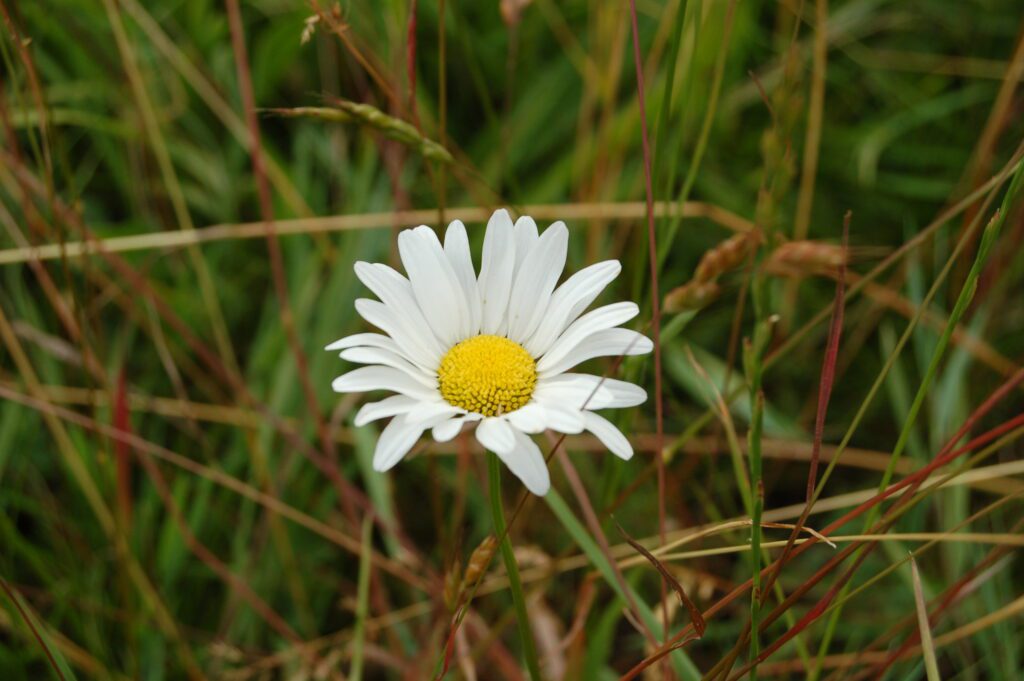
Ox-eye daisy – daisy means day’s eye as the flower opens when sun comes up. It is also known as moon daisy as it appears to glow when moon comes up. Other names are moon penny and dog daisy.
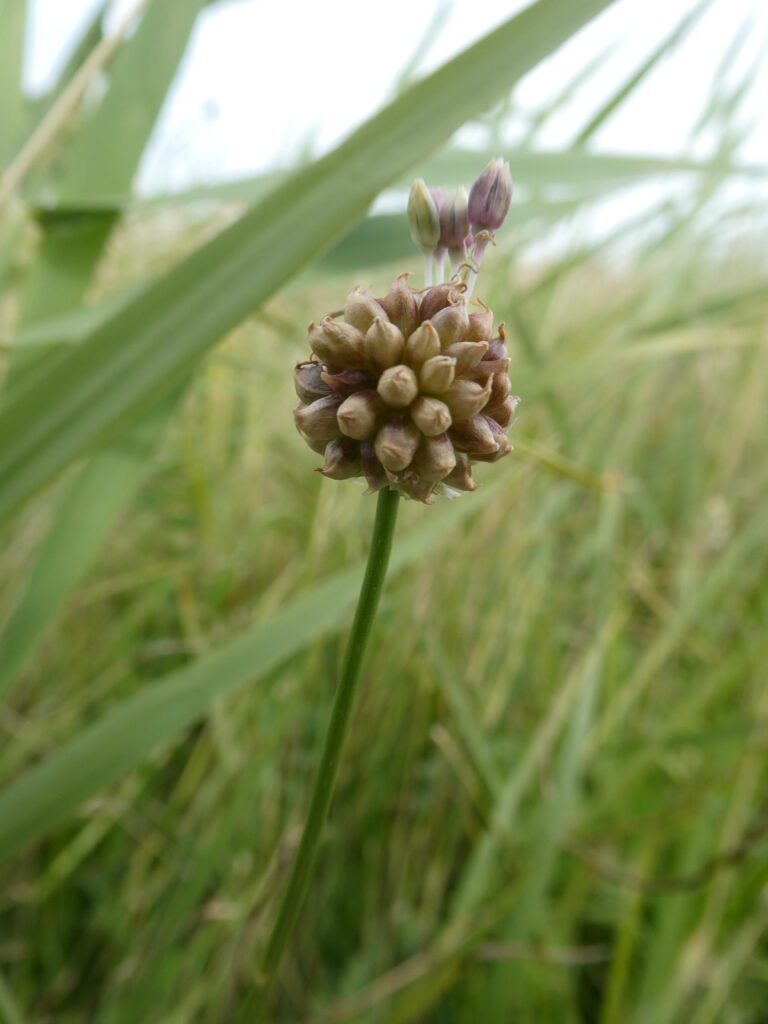
Crow garlic
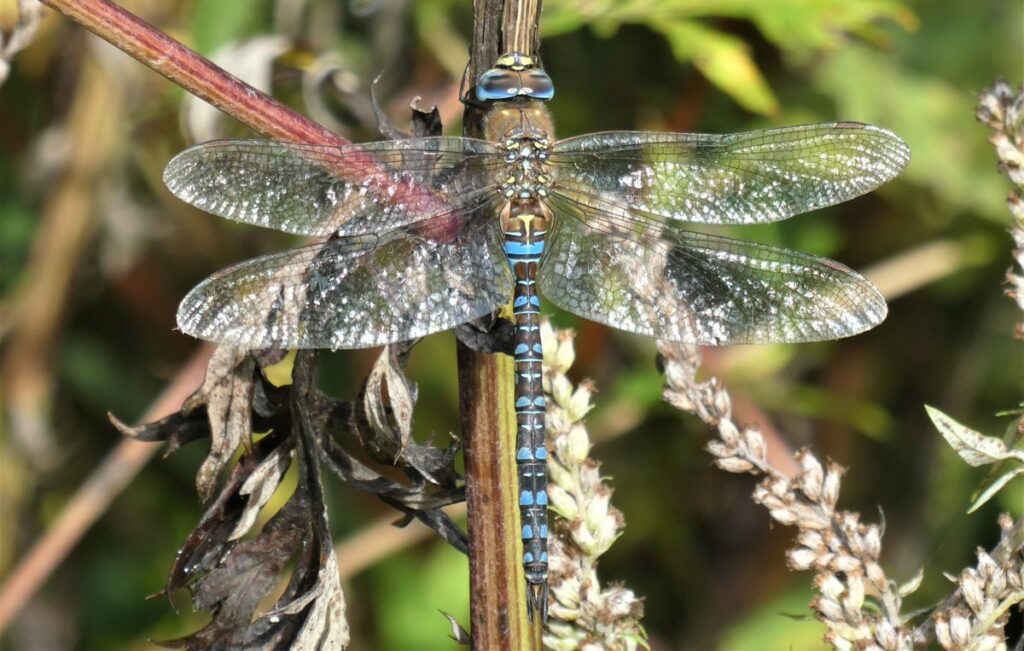
Common hawker
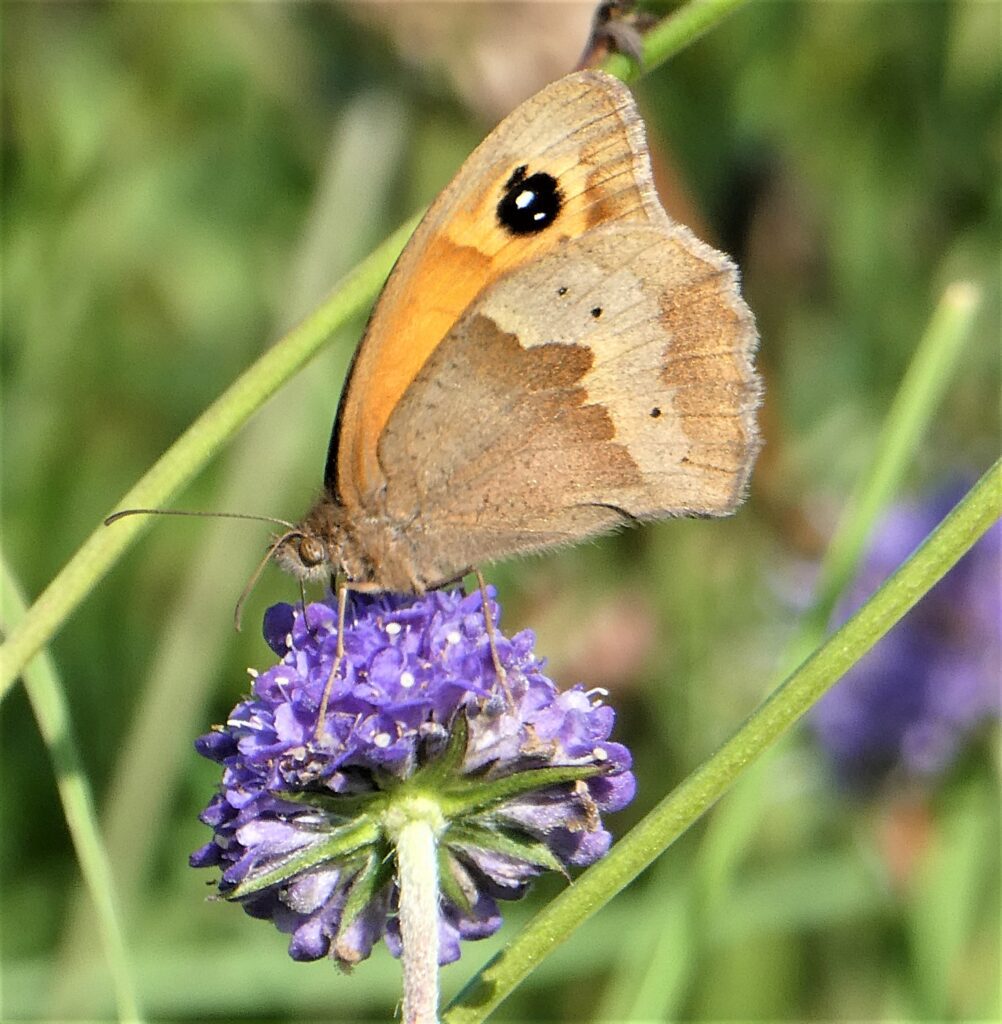
Meadow brown. The eyespots on the wings are there to scare off predators. They can fly in low light because the dark brown of their wings soaks up the energy of the sun.
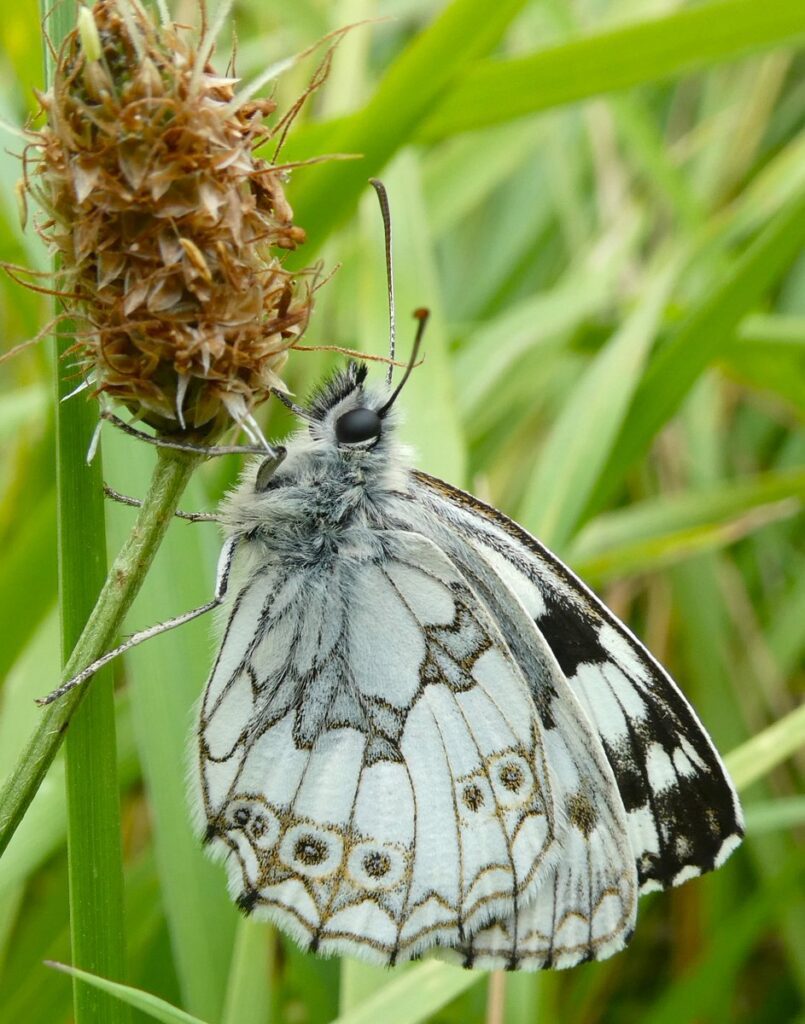
Marbled white butterfly.
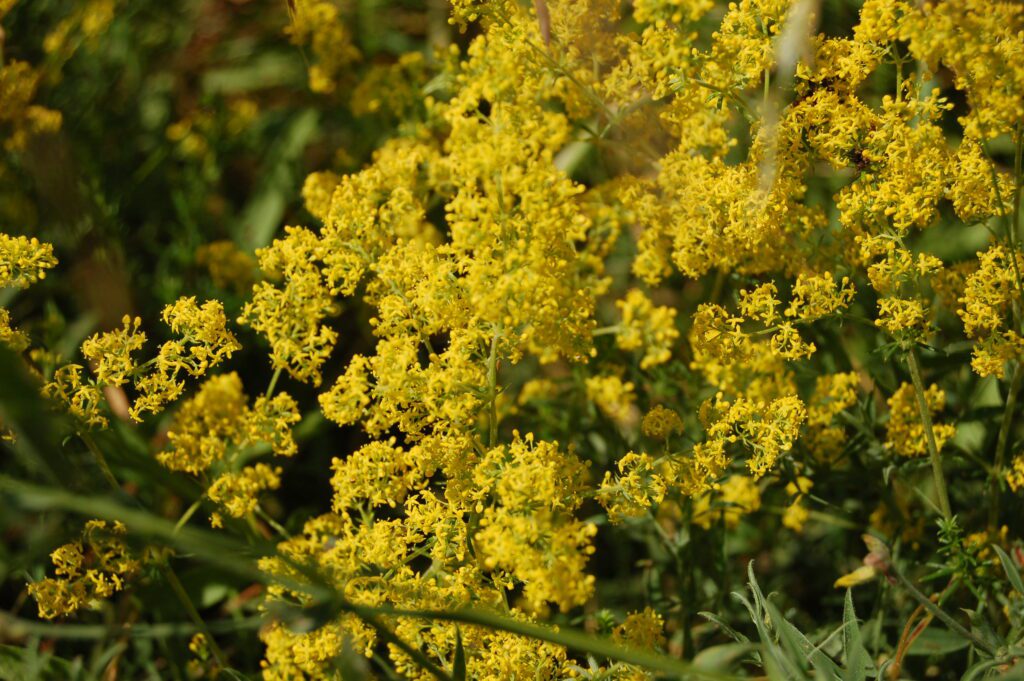
Lady’s bedstraw – or Our lady’s bedstraw – there is a white version, but it was thought that after it was used as bedding by Mary at the birth of Jesus, it turned gold in her honour.
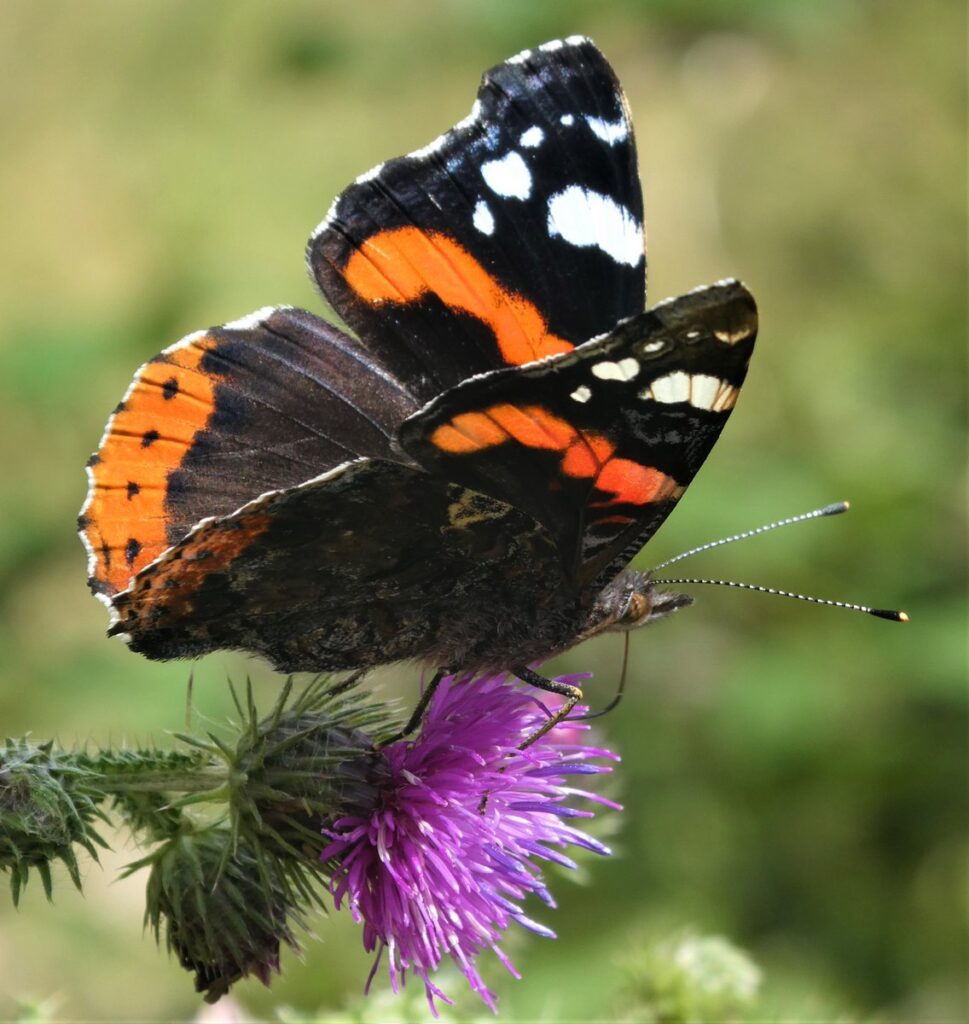
Red Admiral
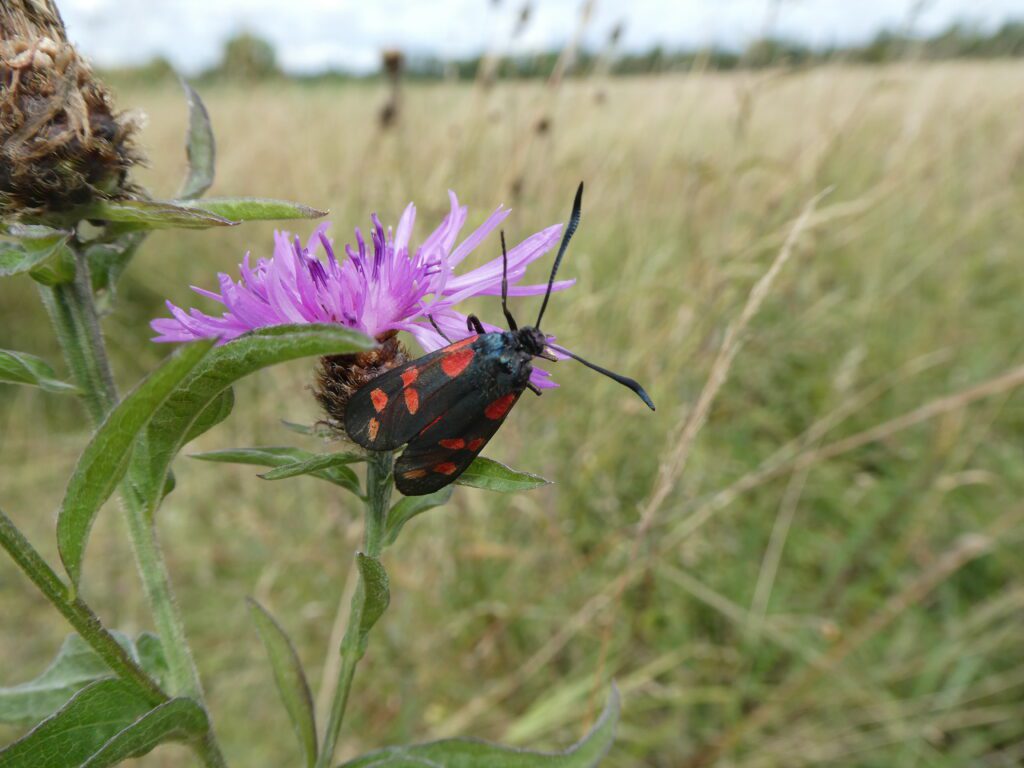
A six spotted burnet on knapweed.
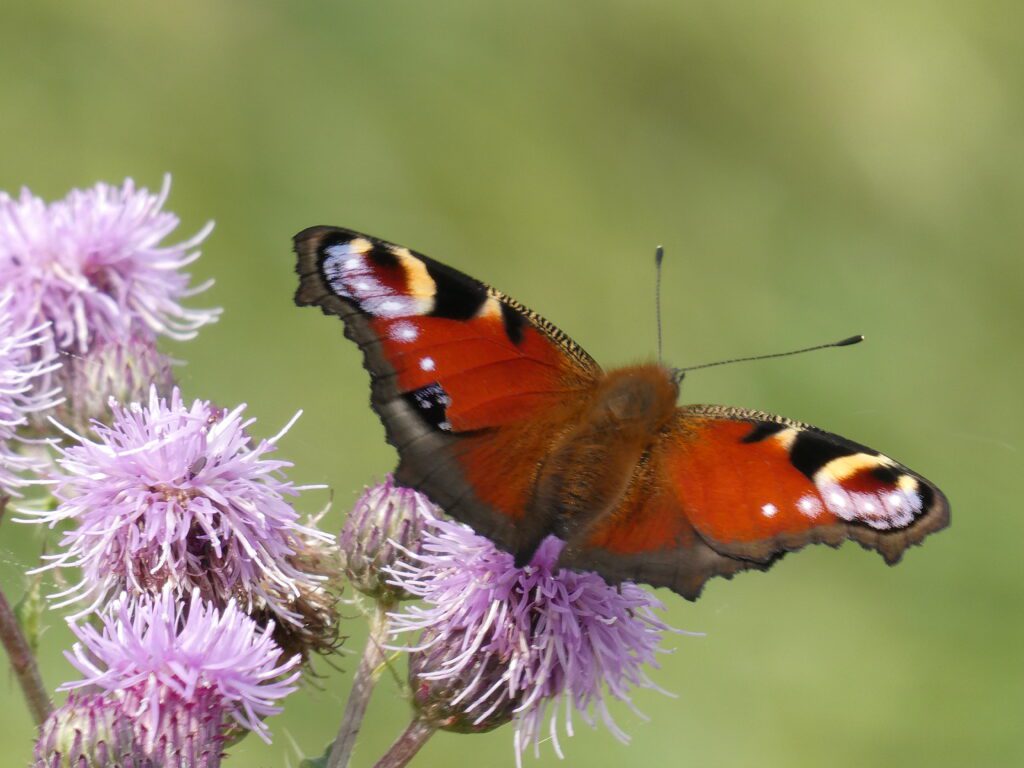
Peacock butterfly
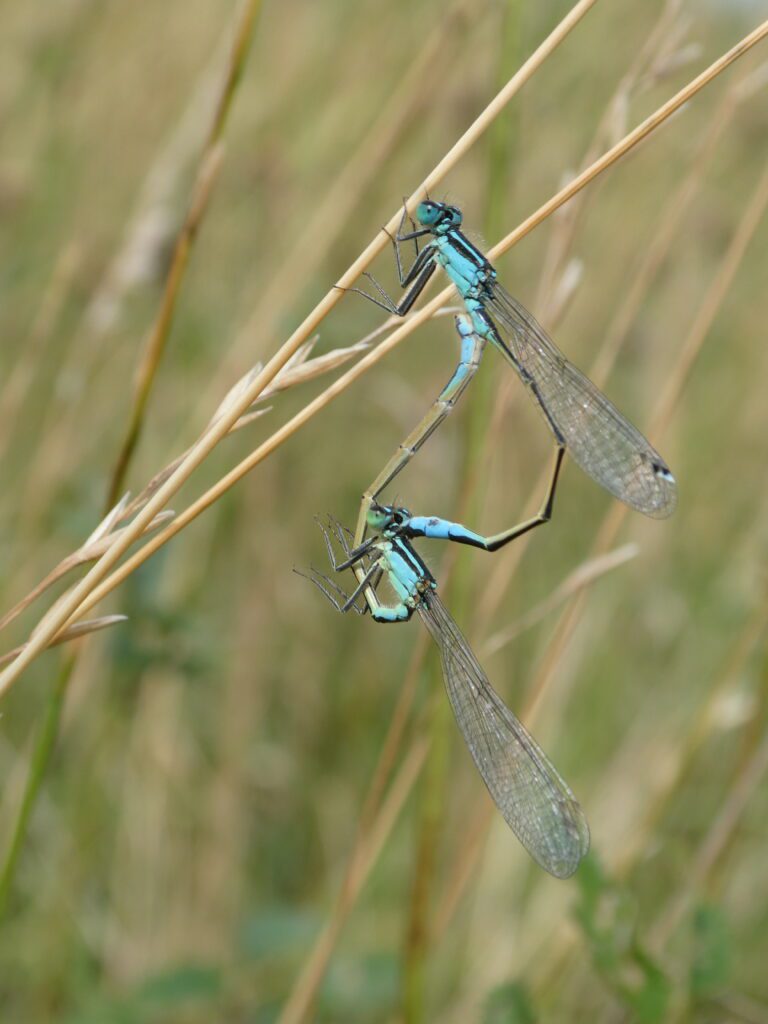
A pair of mating metallic blue damsel flies. The male grabs the female by the head and encourages her to to loop her abdomen round so they interlock. The male then removes any sperm that the female has already received, then inserts his own on to her eggs. ‘Sex is always so much less fun if you are an insect’ says Bea.
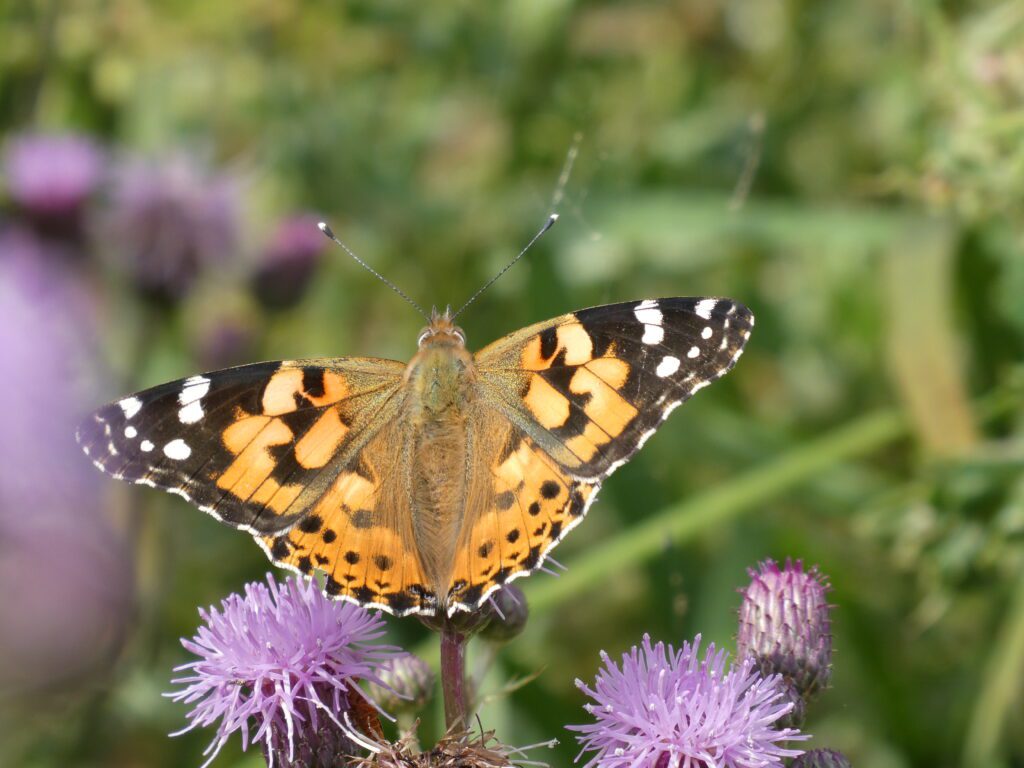
The painted lady butterfly hails from Africa and lays her eggs on thistles. It is thought it makes the longest migratory flight of any butterfly.
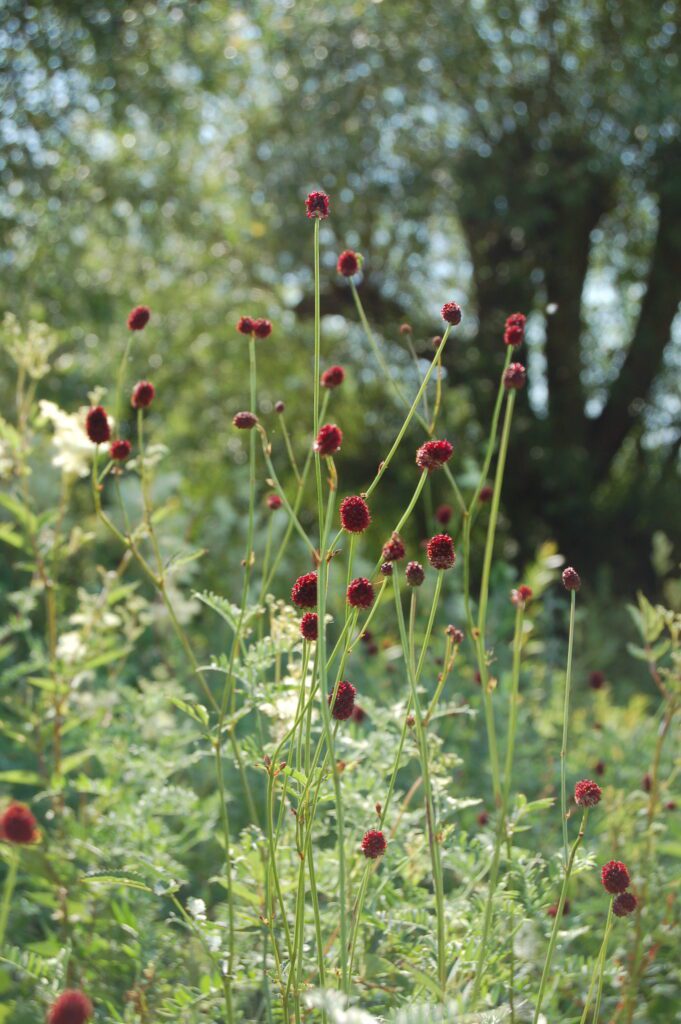
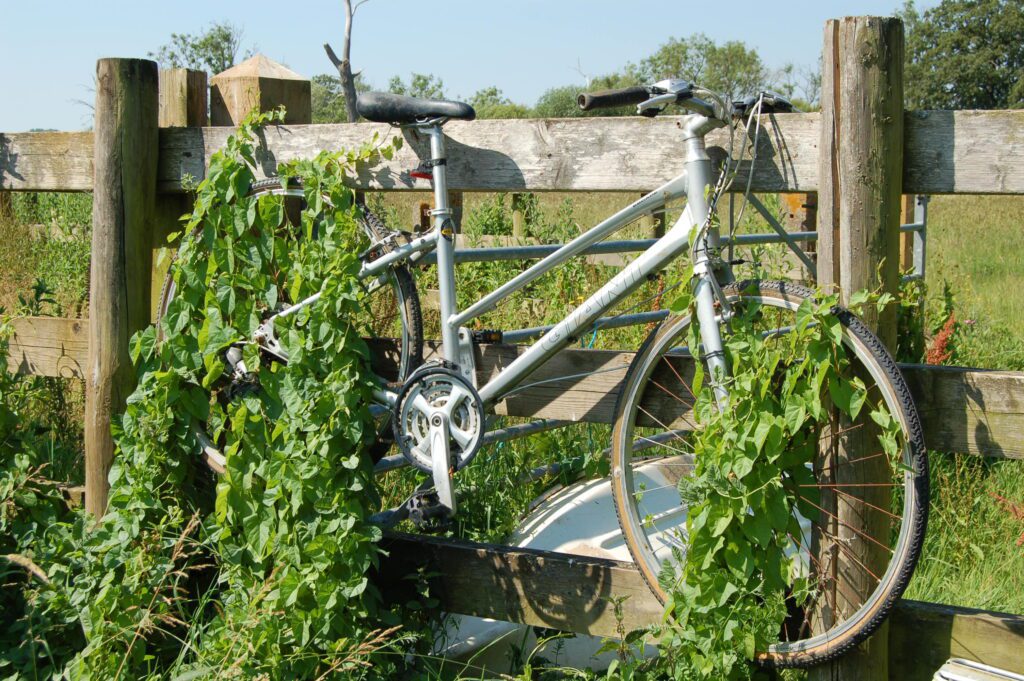
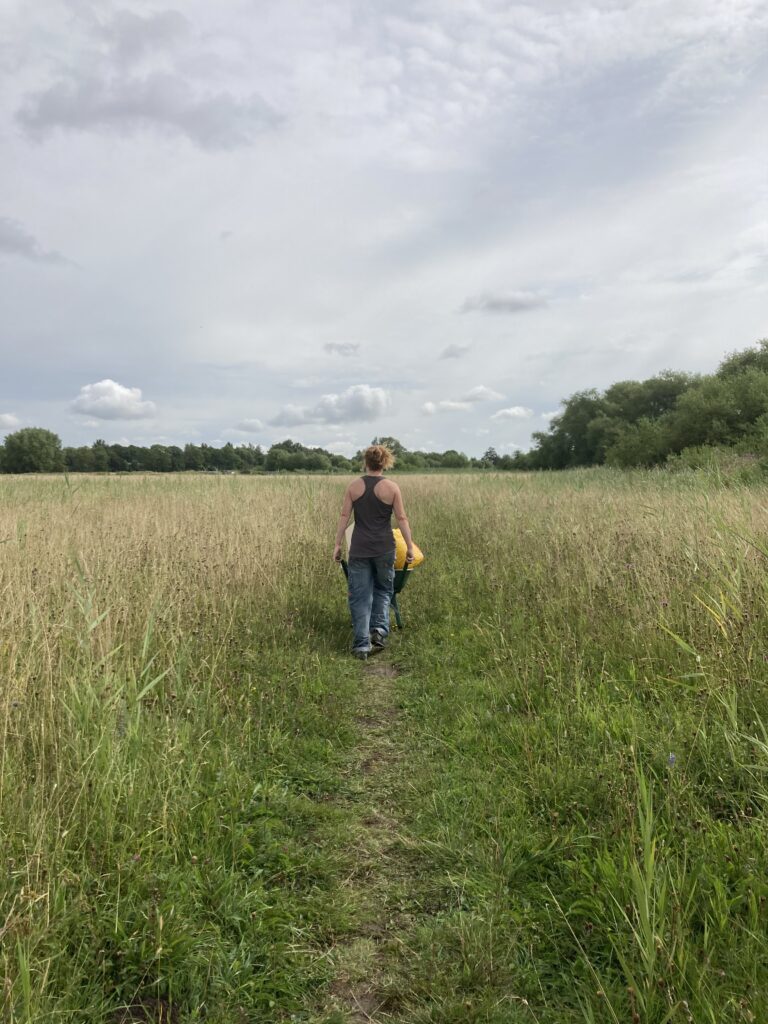
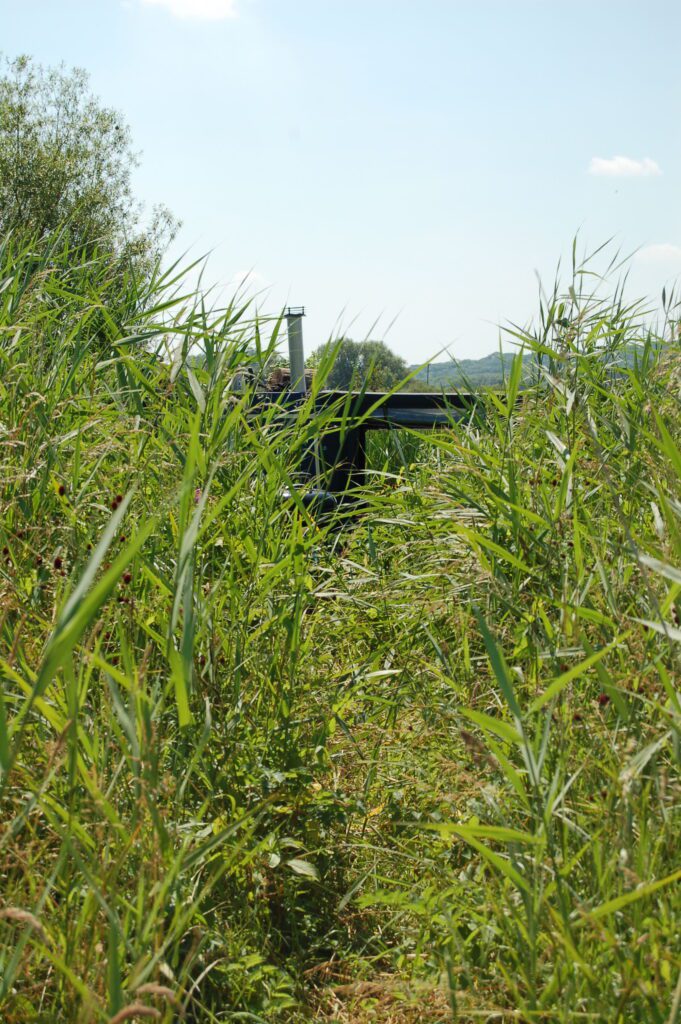
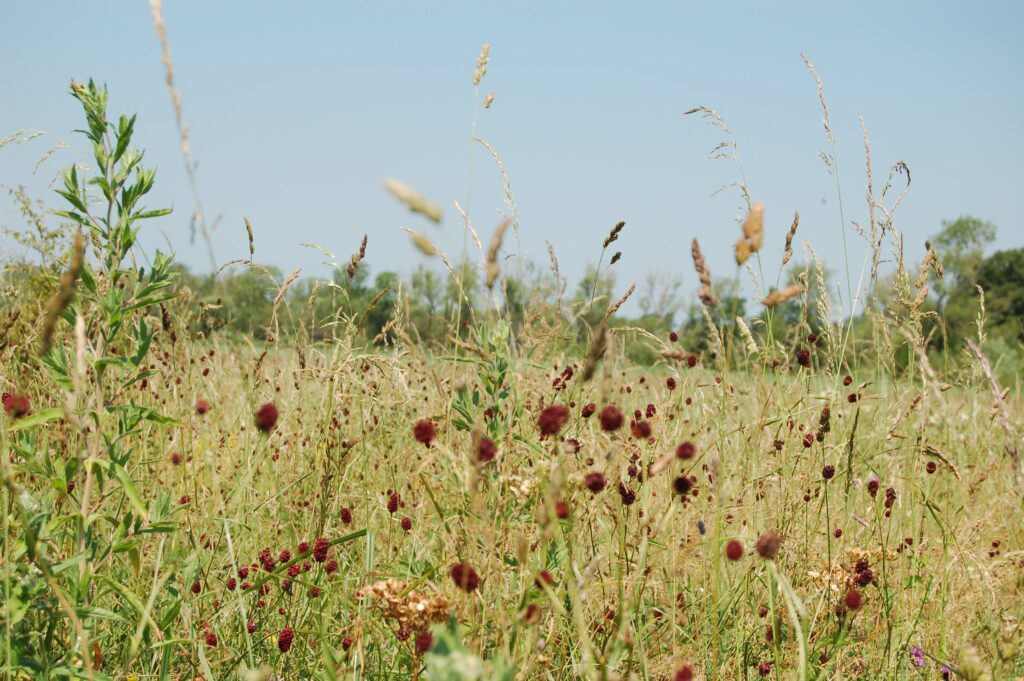
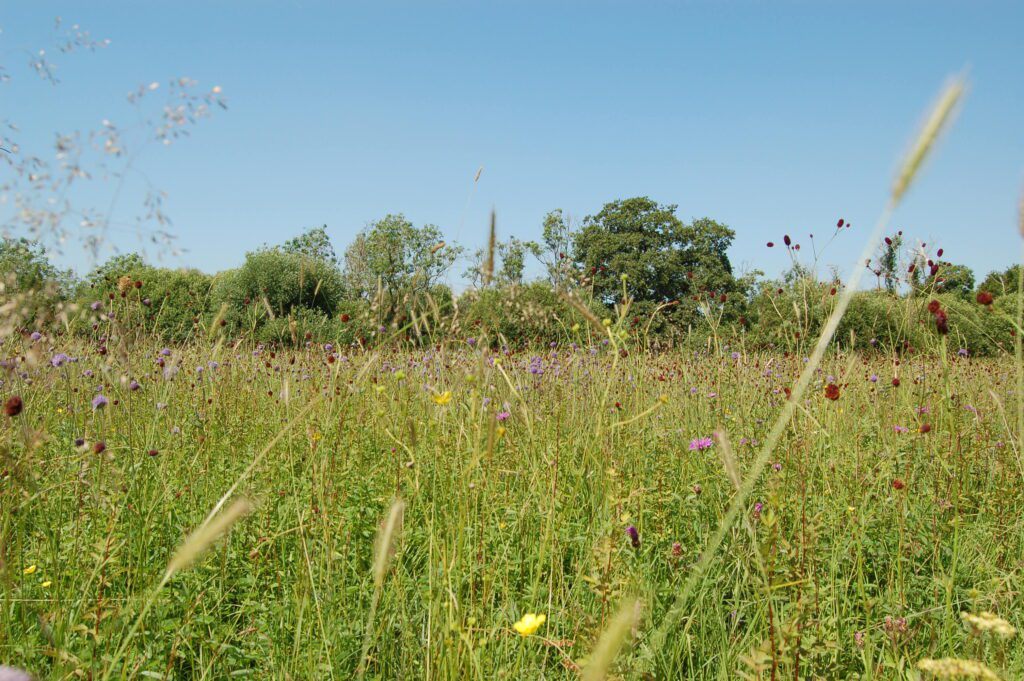
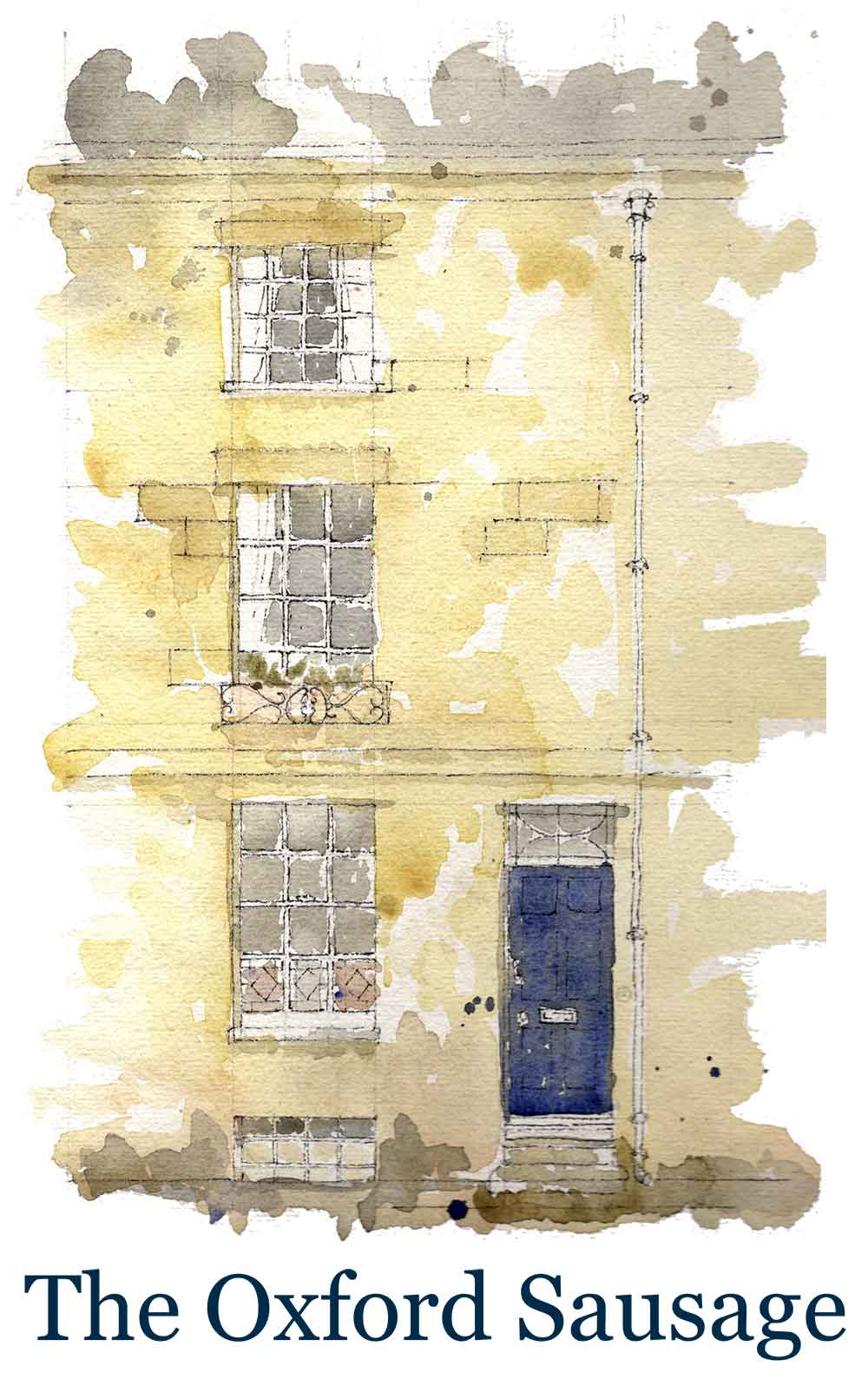
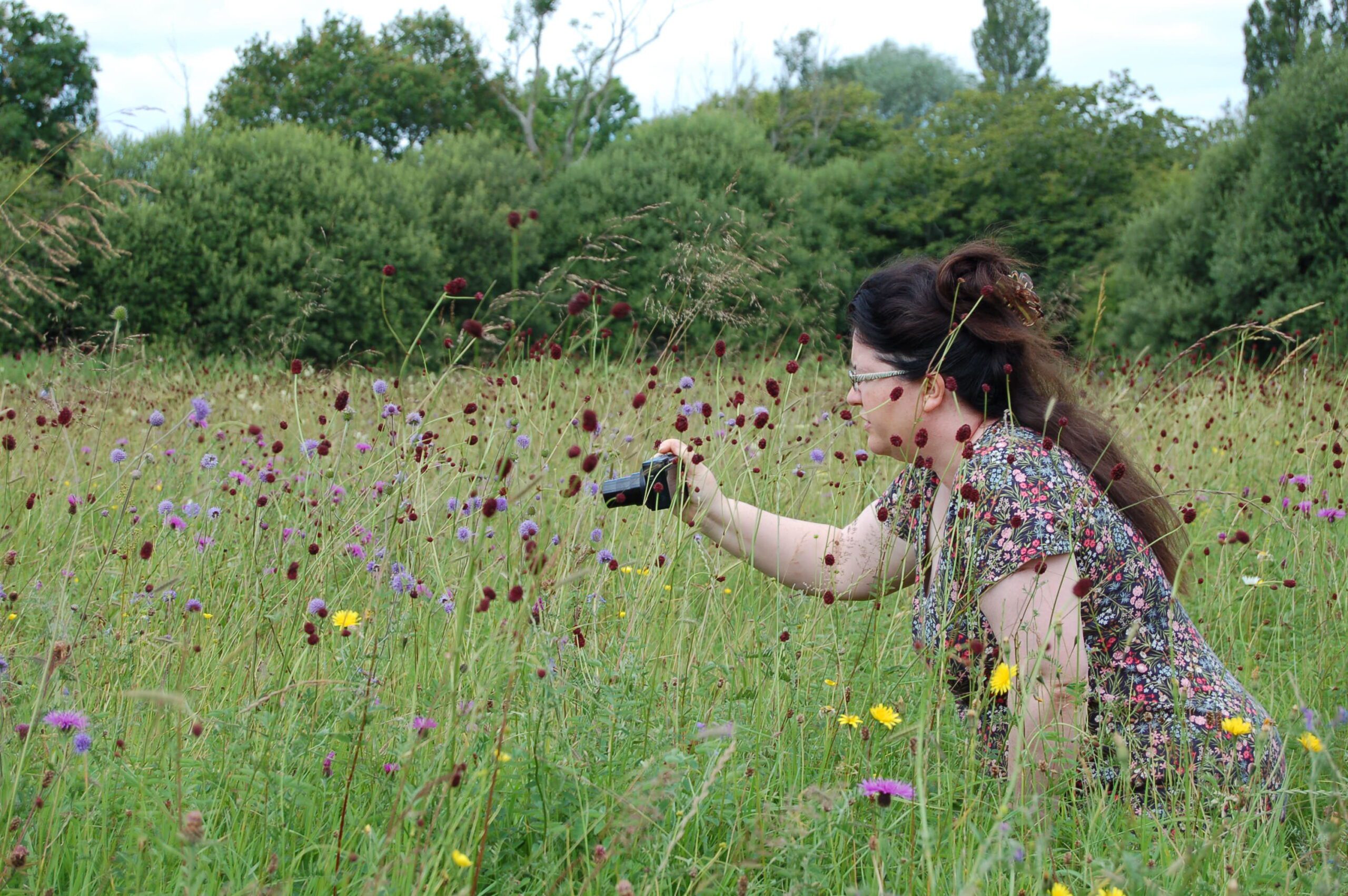
3 Comments
Join the discussion and tell us your opinion.
Wonderful post! Bravo dear friend for an amazing year of fascinating things, so beautifully written and illustrated.
xxxx
Love this! Beautiful photos. Inspiring words
[…] A walk in Oxey Mead […]